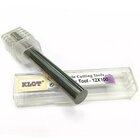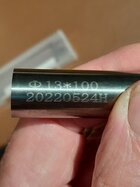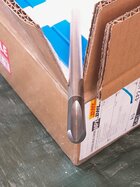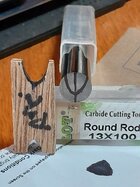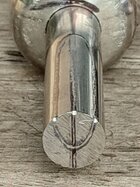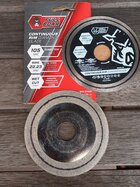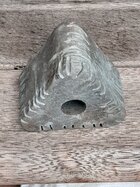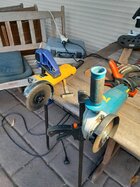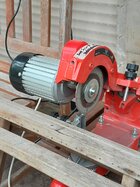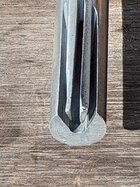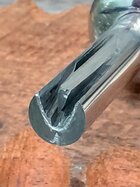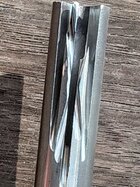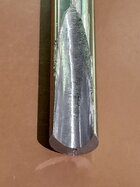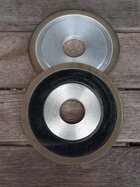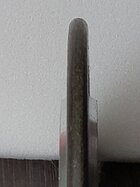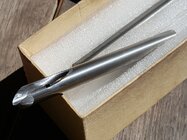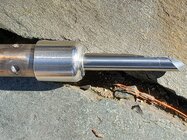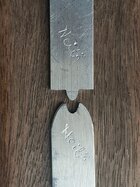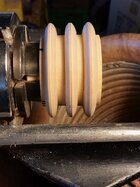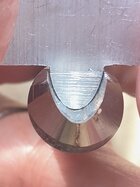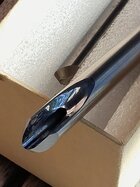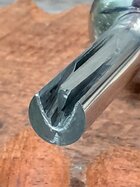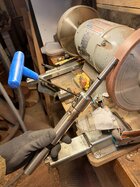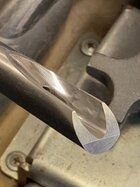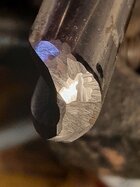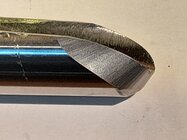Fellow forum member @hughie and myself are using traditional style bowl gouges made from Tungsten Carbide (TC) to turn the hard woods that we are working with. The TC gives us better edge durability when working with those woods. This thread shares how we went about making them for anyone who would also like to make one/some traditional style bowl gouges from TC for themselves.
I have previously posted how Hughie and I have made bowl gouges from HSS…
www.aawforum.org/community/threads/grinding-short-flutes-to-make-new-bowl-gouges.20906
I have also posted the results of my testing of the performance of the TC bowl gouges that we made and compared their cutting edge durability against 15V, 10V and M42…
https://www.aawforum.org/community/threads/testing-tungsten-carbide-bowl-gouges.21532/
The technique we have used for making the TC bowl gouge tips is similar to how we made the flutes in HSS described in the thread above, but there are some additional aspects for TC and this thread is about those additional requirements.
Sourcing round TC bar
Living in the part of the world where we do, we sourced the TC bar stock from China. No doubt you will find similar sources in the US. We have used both solid round bar and some with a centre hole pre-formed in it. The thinking with the second type is that it would help locate and keep the centreline of the blank (it didn’t always) while grinding.
TC grade designations can be a bit of a mystery. The advice on the most suitable grade of TC for woodworking is below 1μm carbide size in 6%, or less, of cobalt matrix. I settled on the submicron grade YG6X (6% Cobalt with a HR(A) of 93).
BTW, at Rockwell 93 HR(A) you have an extremely hard, but brittle material… push it into fast spinning hardwoods for all you are worth, but don’t drop it on your concrete floor or whack it against another very hard material.
Given the durability of TC, only short flute tips of it are required to provide a gouge that will last a very long time. Unfortunately TC round bars are manufactured in standard 12” lengths, however, some suppliers will pre-cut it into 6 and 4” lengths. With 4” lengths I grind a single flute of about 1-1/2” length and a double flute (one on each end on opposite sides) on 6” lengths.
If you have the skills to silver-solder (I don’t) you can go with shorter lengths of TC brazed to SS or silver/bright steel bars of the same diameter, but you won’t get 2” pre-cut lengths, so if you decide to go that way cutting it to length will be your first task.
I have previously posted how Hughie and I have made bowl gouges from HSS…
www.aawforum.org/community/threads/grinding-short-flutes-to-make-new-bowl-gouges.20906
I have also posted the results of my testing of the performance of the TC bowl gouges that we made and compared their cutting edge durability against 15V, 10V and M42…
https://www.aawforum.org/community/threads/testing-tungsten-carbide-bowl-gouges.21532/
The technique we have used for making the TC bowl gouge tips is similar to how we made the flutes in HSS described in the thread above, but there are some additional aspects for TC and this thread is about those additional requirements.
Sourcing round TC bar
Living in the part of the world where we do, we sourced the TC bar stock from China. No doubt you will find similar sources in the US. We have used both solid round bar and some with a centre hole pre-formed in it. The thinking with the second type is that it would help locate and keep the centreline of the blank (it didn’t always) while grinding.
TC grade designations can be a bit of a mystery. The advice on the most suitable grade of TC for woodworking is below 1μm carbide size in 6%, or less, of cobalt matrix. I settled on the submicron grade YG6X (6% Cobalt with a HR(A) of 93).
BTW, at Rockwell 93 HR(A) you have an extremely hard, but brittle material… push it into fast spinning hardwoods for all you are worth, but don’t drop it on your concrete floor or whack it against another very hard material.
Given the durability of TC, only short flute tips of it are required to provide a gouge that will last a very long time. Unfortunately TC round bars are manufactured in standard 12” lengths, however, some suppliers will pre-cut it into 6 and 4” lengths. With 4” lengths I grind a single flute of about 1-1/2” length and a double flute (one on each end on opposite sides) on 6” lengths.
If you have the skills to silver-solder (I don’t) you can go with shorter lengths of TC brazed to SS or silver/bright steel bars of the same diameter, but you won’t get 2” pre-cut lengths, so if you decide to go that way cutting it to length will be your first task.
Last edited:


